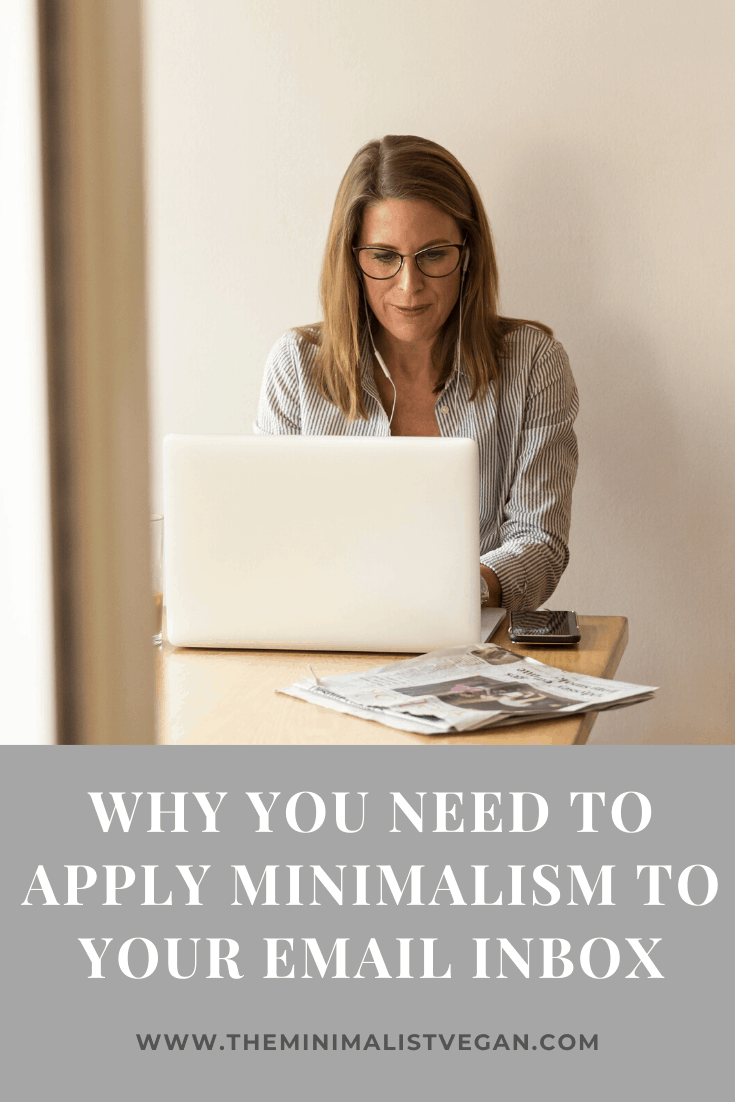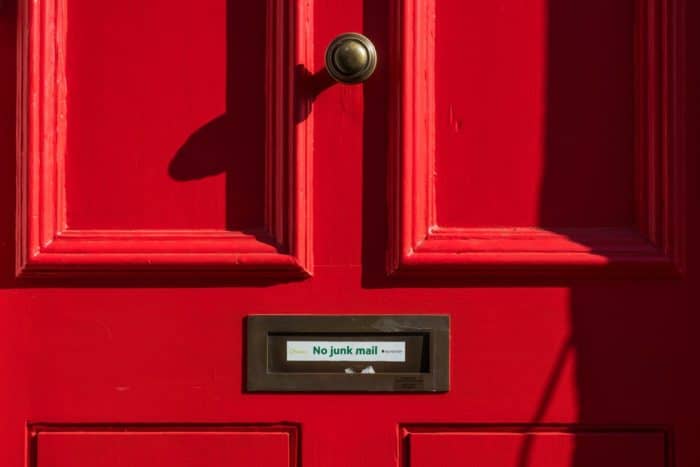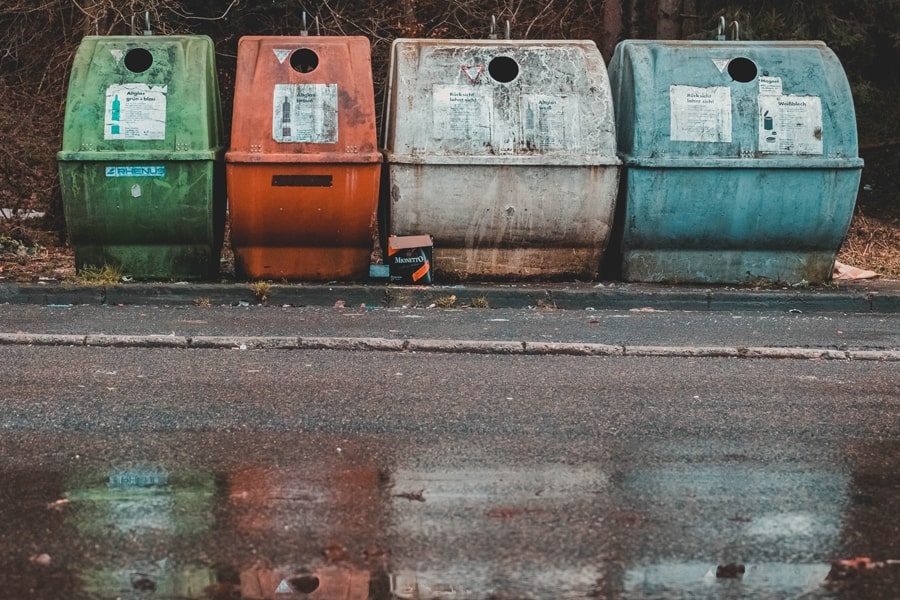If you’re reading this post, it’s safe to assume that you have an email address. We use email universally to communicate and send messages to each other. Some of us are more dependent on email than others, frequently checking our inboxes for important updates.
I’ve used my email for as long as I can remember. My first email address was set up on Hotmail with an outrageous username – [email protected] and Maša’s was [email protected]!
Establishing an email was my ticket to the World Wide Web. I can not only send messages to friends and family, but virtually every online service requires an email to sign up.
So when I first got my email up and running, it was such a novelty that I looked forward to checking my inbox and responding to messages every day. However, over time, as I signed up for more services and promotions, my inbox became a dumping ground.
All of a sudden I was overwhelmed with messages and I would lose time trying to find emails, amongst all of the trash and spam.
It wasn’t until I got my first corporate job as an accountant that I learned how to organise my emails. I used Microsoft Outlook to create inbox folders and subfolders for client information.
But even after learning how to manage my inbox like an adult, I still had a ton of messages waiting for me across both my work and personal accounts.
For some reason, having multiple folders made it harder for me to find messages, as the effectiveness of this strategy was dependent on how well I filed emails—which admittedly, I wasn’t very good at.
As I left the corporate world and started my freelancing business helping photographers streamline their online systems, I made it my priority to learn how to manage email.
I read up on productivity philosophies and came across David Allen’s system called Getting Things Done, or GTD for short.
One of David’s first principles was to build momentum in your productivity by achieving what he called “inbox zero.” Inbox zero means processing all of the messages in your inbox so you can stay on top of priority emails.
The whole concept of reaching inbox zero felt liberating. It was like applying minimalism to my email. I had to give it a go! Minimalist email, perhaps?
My journey to minimalist email
Like many of us, I had thousands of messages to deal with before reaching inbox zero. Clearing my inboxes across all my emails was a daunting task.
But I was motivated by how I would feel when I would open up my email to see that there were no messages or only the few that I had to address.
Initially, I logged directly into my email account online which included a Hotmail account and two Gmail accounts.
Regarding filing, David Allen’s advice was to avoid creating folders and instead archive all of the messages you wanted to keep and delete all of the messages you don’t need anymore.
The idea was to then rely on the search tool to find old messages. I loved this simple approach to filing.
I had a simple philosophy. Keep all personal emails, e.g. emails from conversations I’ve had with other people, and delete the rest. When I had cleared my inbox, I would slowly reintroduce the subscriptions that served me.
After realising it would take too long to archive messages one by one, I tried to search for specific email addresses, and process them in bulk. This worked a little better but was still taking too long.
As I was deep in researching email productivity, I stumbled across an app called Unroll.Me. The software would analyse your entire inbox and group messages together by subscription. From there you can quickly make decisions on what to keep and what to delete. I was signed up for things I hadn’t even heard of before!
This app saved me hours of work, and once I cleared my messages, I no longer needed to use it.
So one evening, I had reached inbox zero. It was an incredible feeling that empowered me to keep my inbox clear to this day.
It seems nuance, but taking control of your messages is a big deal. Below are some interesting insights from maintaining a clear inbox over many years.
Life before email
Last year, I started listening to a podcast called Hurry Slowly. The host of the show Jocelyn K.Glei explores concepts of productivity by slowing down. She often compares digital and analogue approaches to productivity, which I’ve found to be fascinating.
Read more: 9 Minimalist Podcasts Offering a Fresh Take on Intentionality
It also got me thinking about digital tools differently. For example, before email, what did we do?
- We communicated via direct mail.
- We used to (and some still do) craft thoughtful letters and send them to each other.
- We used to fill out forms to enter competitions and mail them into game shows.
- We used to receive newspapers and promotional catalogues.
- We used to receive all of our dreaded bills.
The process was physical and tangible.
With the rise of technology, email has effectively replaced direct mail—which has been welcomed by many. After all, it’s inconvenient to sort through physical piles of mail.
But with the email, has anything actually changed?
What if we thought of our email messages as physical mail? Would that change the way you thought of email?
Many of you reading this post have thousands of messages sitting in your inbox right this moment. If represented physically, you wouldn’t have enough space in your house to store these letters.
With digital tools like email, it enables us to store an infinite amount of information without us even realising it. And while the anxiety of physical clutter doesn’t exist with email, it’s still clutter, and for some, it can still cause anxiety.
If there’s one thing I’d like for you to take away from this post, it’s to think of digital things as physical things. Visualise what it would look like if the messages in your inbox suddenly transformed to physical mail. What would you do?
Minimalist email encourages proactiveness
Having an empty inbox enables you to proactively make decisions about newsletters you’re subscribed to as opposed to feeling too overwhelmed to think about what you need to unsubscribe from.
When your inbox is clear, you’re more likely to give more thought to each message you receive.
Here are some questions I would like to ask when I receive a newsletter:
- Why and how did I subscribe to this?
- What kind of content do they send and how often?
- Is this newsletter helping me become the person I want to be?
- (If online store) Are there any items from this store that’s already on my wishlist?
When your inbox is cluttered, it’s hard to slow down and ask these questions. Inbox zero promotes intentionality—as you become increasingly aware of what you’re subscribed to and why.
However, what’s even more powerful, is how minimalist email change the way you approach subscriptions moving forward. Instead of mindlessly signing up for promotions and freebies, you ask proactive questions and decide upfront whether it’s going to be worth your time.
Get back to long-form written communication
Raise your hand if you’re part of an instant messaging group
where people send
a few words
at a time
and your phone
goes off every couple
of seconds with notifications?
Irritating, isn’t it?
Yet this is how we commonly communicate with each other these days.
Don’t get me wrong. I think it’s surreal to be able to communicate with people around the world so quickly.
Not only that, but it’s never been easier to send images, videos and GIFs. And we can add more personality to conversations with emoji’s, animoji’s and memoji’s.
But bringing it back to life before email, we used to take care in writing letters to each other. And because of how long it took for letters to be posted, we wrote with a purpose.
Long-form letter writing is the art of personal storytelling and genuine acknowledgement and curiosity of the person you’re writing to.
And because such care is taken in this form, you would eagerly await a response, as opposed to turning on do not disturb mode because your phone erupts with notifications when you’re trying to watch Netflix or read a book.
I say all of this because reaching inbox zero encouraged me to get back to long-form one-on-one communication. It’s not uncommon for me to send people, even readers, long emails. We go back and forth, sometimes over weeks exchanging thoughtful ideas and experiences.
I love this pace of communication. It has more depth than the one-liners of messaging platforms. There’s no pressure to reply instantly. The form requires you to take your time which is not a bad thing when you think about it.
What minimalist email looks like
Hopefully, by now, you’re feeling inspired to treat your inbox as a sacred room in your house. Digital clutter is still clutter. Don’t let the screen fool you. Your inbox awaits decisions, clarity and connection.
Once you reach inbox zero, I’m sure you’ll feel better about it.
I’d love to hear from you now about minimalist email activity. What’s the current state of your inbox? How does it make you feel?







Hey Michael, thanks for this lovely and thoughtful blog post. I’ve been wanting to reach inbox-zero for quite sometime now. I recently switched to a single inbox instead of having so many sections. Feels like a first step! But, this post has inspired me to go inbox-zero and consume emails more consciously. Thanks again!
Hi Michael! I loved the inbox zero idea. As a matter of fact, I have very recently started unsubscribing to newsletters that are no longer relevant to me. It feels much better to open a not so cluttered inbox. (Still need to work on it)
Our online lives are already too overwhelming as it is, why should we make it worse, right? I was actually getting anxious every time I opened my inbox. I feel like I owe it to the person/company on the other site to open and read what they send me. It’s a question of respect for people’s time. Does that make sense? Anyway, it became virtually impossible to go over all emails and I was leaving behind the articles I really wanted to read (like The Minimalist Vegan’s newsletters!). No longer a problem now!
This article has inspired me to go back and do more “cleaning up”! 😉 Good job for a Sunday morning!
All the best you guys. Wishing you both a wonderful week!
(Oh, before I go, here’s food for thought for a future post: what is your take on “minimalizing” on social media platform? Another overwhelming aspect of online life! I have noticed that you have only Instagram, Facebook and Pinterest. I have those plus Twitter, Bloglovin and Youtube, but I’ve been thinking of deleting my Twitter account. I just don’t see the point of so many things going on. What do you guys thing?)
I would also love to hear about your take on social media. For the month of January I actually took myself completely off all platforms. I also made a rule for myself, no screen time (of any kind) after 8pm and before 8am. I’ve found that I really don’t miss Facebook as much as I thought I would and the no screen time, time has allowed me to do other things like read more books and I’ve taken up mediation as well. Technology is wonderful, but I do remember a time without it and somedays it’s hard to say which time was better or easier. This little experiment has definitely helped me uncluttered my mind. I feel calmer and less reactive. I also use my “screens” as tools more so than escapes from everyday life. Can’t wait to hear what you can offer to this! Happy Sunday to you!
Hi Luciana & Ashley,
Firstly, Luciana, I’m so stoked that this article has inspired you to continue cleaning up your digital life. Hope you had a good Sunday session, and are feeling much better now 🙂
Regarding your questions about social media, Masa wrote a piece about this very topic last year called; Yes, I Don’t Want To Quit Social Media, which you can find here https://theminimalistvegan.com/dont-quit-social-media/).
We have a slightly different take on the use case for social media as it relates to our priorities. Would love to get your take as well 🙂